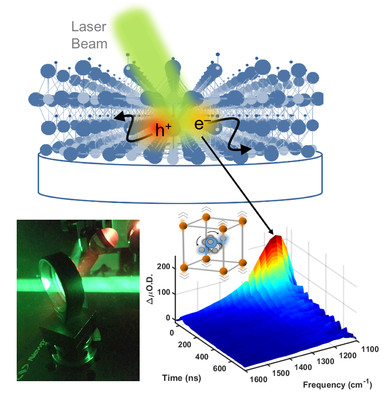Researchers at Penn State have gained new insight into how halide perovskite materials enable the efficient conversion of sunlight into electricity.

Scientists state that halide perovskites tend to have a unique tolerance for imperfections in their structures, which allows them to efficiently convert sunlight into electricity when other materials with similar imperfections do not. What makes these materials so tolerant of imperfections, however, was unknown prior to this study. The researchers used ultrafast infrared imaging technology to investigate how the structure and composition of these materials influence their ability to convert sunlight into electricity.
"What is interesting is that such large-scale atomic motions typically lead to a loss of crystalline structure in other materials, creating imperfections that drain excited state energy," said the team. "But with halide perovskites, researchers can chemically substitute electronically charged atoms in the material to tune the amplitudes of such atomic scale motions. This will allow us to improve the performance and stability of halide perovskite materials".
"Currently, halide perovskites often contain toxic elements like lead and are not yet as stable as they will need to be to replace silicon solar cells," said the researchers. "The insights from this study will enable us to create rules for designing new halide perovskites using roll-to-roll processing. This will guide the development of next generation perovskite materials that are more stable and that contain less toxic elements such as tin instead of lead."

